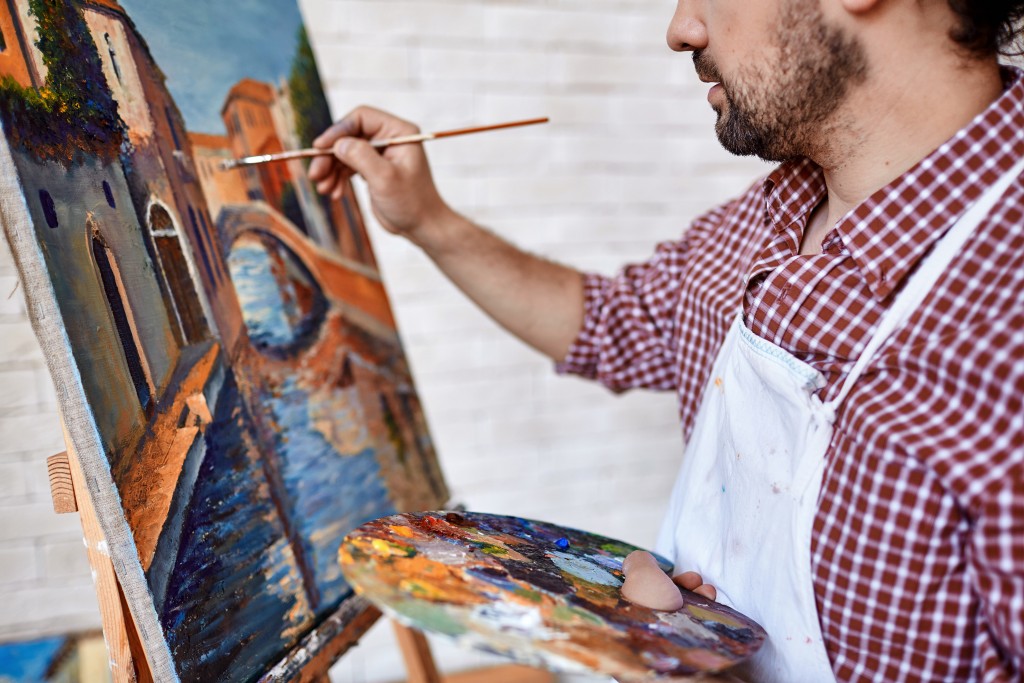As our technology progresses, we are provided with all sorts of digital tools to create art on our computers. With the help of the internet, it has also become easier for us to upload and share some of our artworks online with friends and other artists.
Unfortunately, this convenience has its downside too. Because of how accessible our artworks are online and on our storage devices, many people can easily download or copy them for their own use. To help with that, we prepared this article to determine what kind of protection you need.
Tips to Protect Your Artwork
Any form of art uploaded online or saved on your computer is susceptible to plagiarism or damage. That’s why it’s important that you know how to keep them protected. Below are some tips that could help solve this problem.
Start with Low Resolution or Small Images
The first step you need to take is to upload low resolution or small images if you just want people to see your artwork. If you use images that are only about 72 to 96 dots per inch or dpi or around 300 megapixels, online thieves can only print small copies of your artwork. Otherwise, they would have to stretch it, causing the image to blur or pixelate. This makes the artwork unsellable or unsuitable for anything relevant.
Use a Firewall
If you work on a private network with other people using computers, you want to make sure that only people involved in your online art business can access your storage devices. That’s why you must utilize a firewall in the third generation to prevent public users, which is where hackers and online thieves often are, from accessing your network. By blocking incoming traffic that doesn’t have permission to enter your private network, you can guarantee that your artworks are safe.
Edit EXIF Data
If your art involves photography, most images from DSLR cameras are equipped with EXIF data. This holds all the relevant information about an image, and it can also be edited. Under the “description” portion of the EXIF data, you can include your name in there for additional copyrighting measures. This may not stop people from downloading your images, but anyone else who can access your copied material can be notified that the image rightfully belongs to you.
Check Terms and Conditions Before Submitting
If you are submitting your work to a company or uploading it to a third-party website, be sure to check the terms and conditions first. This details how they intend to protect your content and intellectual property. The terms and conditions also include where they plan to use your artworks, which means that if you see them using it elsewhere, you have the right to refuse or discontinue their services. You can also take legal actions against them if the deed of sharing it outside of the agreement is already done.
Add a Copyright Notice

Some people who download or copy your artwork are unaware that it’s illegal. That’s why adding a copyright notice to your website or other platforms may also be helpful. This notifies those who plan to download your artwork that it may be subject to certain legal actions. Remember that a copyright notice will not stop those who are determined to steal your artwork.
Include a Watermark
One of the most common precautionary measures that artists make when they upload their artwork online is to include a watermark. This can be a logo, your name, or a signature that symbols you or the company you represent. Even though people can still grab your images, they wouldn’t be able to use them anywhere without showing their audience that the image does not belong to them.
Let People Contact You
If you don’t mind people using your artwork as long as you are properly credited and ask for your permission, you can also add your contact information to the artwork itself or your website. This will make it easier for people to reach out to you if they ever want to use your artwork. It will also provide you with the opportunity to politely decline their request if you feel that they intend to use it for the wrong purpose.
We are lucky enough to have access to various materials that help further our passion for the arts. However, it’s no secret that there are people out there who steal your properties and use them to their advantage. While there are laws that exist to protect your intellectual property, taking the necessary steps to avoid copyright infringement or plagiarism is also important.

